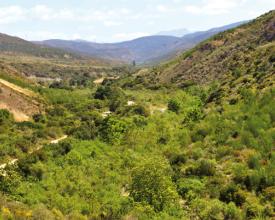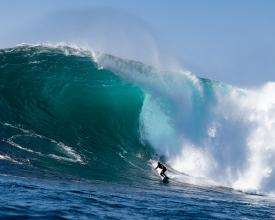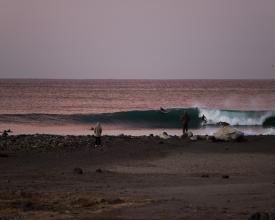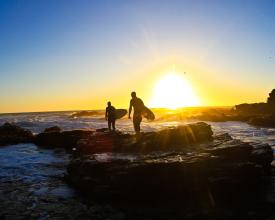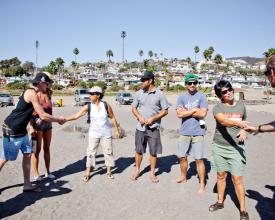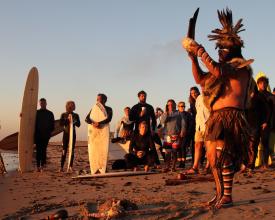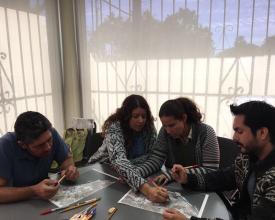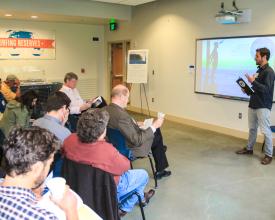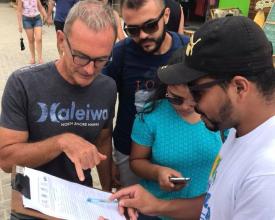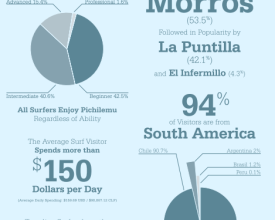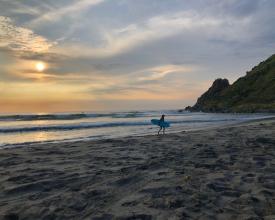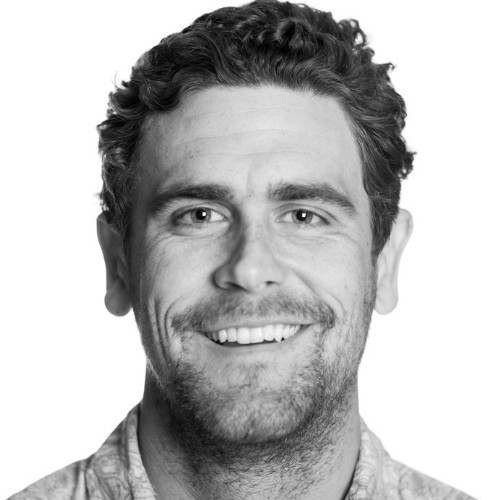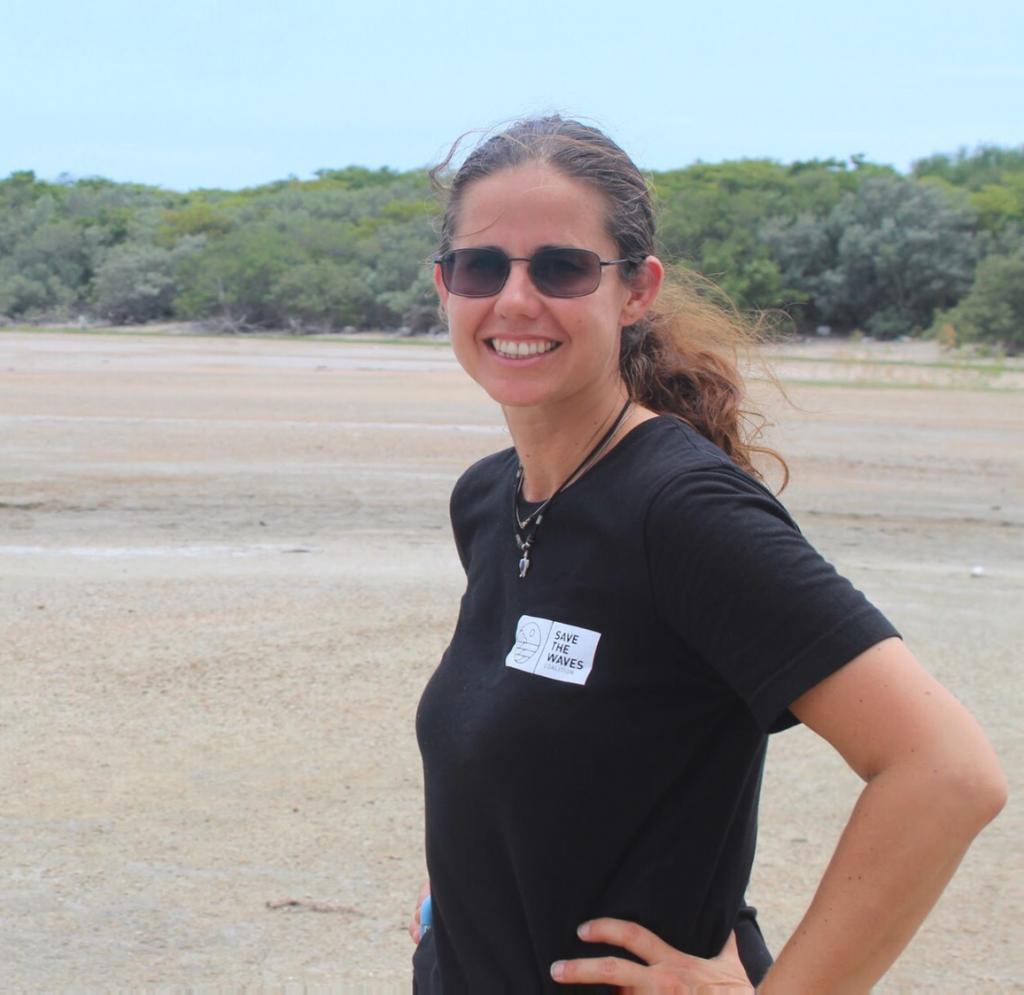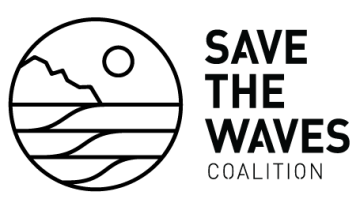
Reservas mundiales de surf
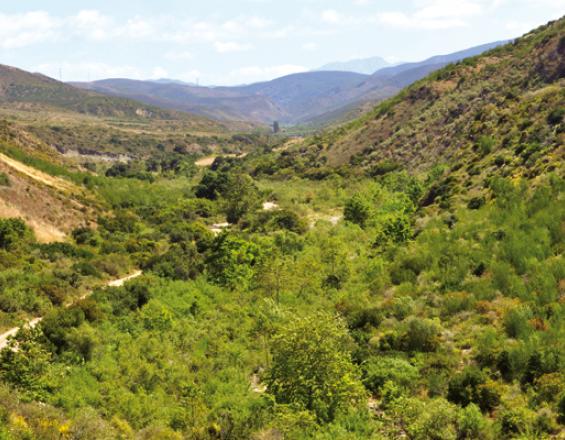
Un ecosistema de surf es más que una ola: son los componentes geofísicos, las plantas y animales y las interacciones humanas que hacen que un lugar sea especial. Proteger los ecosistemas de surf protege a su vez los hábitats marinos, mantiene la integridad de la ola y salvaguarda los medios de vida locales.
Las Reservas Mundiales de Surf (WSR, por sus siglas en inglés) sirven de modelo para preservar los rompientes de olas y sus zonas circundantes reconociendo y protegiendo atributos medioambientales, culturales y económicos clave en las comunidades costeras.
Las WSR representan una red mundial de reservas de surf designadas que gestionan, aplican y protegen las comunidades locales. Cada año, un consejo independiente selecciona una nueva Reserva Mundial de Surf entre un grupo competitivo de solicitantes.
La Reserva Mundial de Surf Bahía de Todos Santos fue designada en 2014 y ha puesto en marcha múltiples proyectos para proteger los ecosistemas y las olas de la región y es un excelente ejemplo de cómo la Reserva Mundial de Surf puede proteger la costa.
Contexto
Défis à relever
Entre los retos que plantea la puesta en marcha de la Reserva Mundial de Surf y el Plan de Gestión Local asociado figuran las fuentes de financiación a largo plazo, la capacidad local, la política local y la magnitud de las amenazas a las que se enfrenta el ecosistema.
Ubicación
Procesar
Resumen del proceso
Todo comienza con el proceso de solicitud y selección, en el que se selecciona la región mejor equipada para funcionar y aplicar los principios del programa de la Reserva Mundial de Surf. A lo largo del proceso de solicitud, se establece una sólida relación entre Save The Waves y las partes interesadas de la comunidad local y, conjuntamente, se forma la Coalición, a medida que se establecen alianzas dentro de la comunidad y con el personal de la Coalición Save The Waves.A medida que se construye la coalición, se establecen las relaciones necesarias y los objetivos identificados para desarrollar el Proceso de Planificación de la Custodia, así como para llevar a cabo otros proyectos que mejoran el carácter de la Reserva Mundial de Surf, como Surfonomics. El proyecto Surfonomics y el Plan de Custodia forman una base sólida de pruebas y un esquema de gestión para que la Reserva Mundial de Surf pueda llevar a cabo sus proyectos e iniciativas de conservación.
Bloques de construcción
Proceso de nominación para el WSR
Cada año, Save The Waves acepta una nueva Reserva Mundial de Surf de comunidades surferas de todo el mundo. El proceso de solicitud requiere un importante trabajo por parte de las comunidades locales y su consulta se basa en los siguientes criterios fundamentales:
1) Calidad y consistencia de la(s) ola(s);
2) Características medioambientales importantes;
3) Cultura e historia del surf;
4) Capacidad de gobernanza y apoyo local;
5) Área de conservación prioritaria
Cada solicitud es revisada por un Consejo de Visión independiente formado por profesionales de los campos de la conservación, los negocios, las organizaciones sin ánimo de lucro y el surf. Una vez seleccionada la Reserva Mundial de Surf en función de los rigurosos criterios, se somete al Proceso de Planificación de la Gestión y a los demás componentes básicos para dedicar formalmente la Reserva Mundial de Surf.
Factores facilitadores
- Alta puntuación en los criterios del WSR (véase más arriba)
- Excelente apoyo local y capacidad para llevar a cabo proyectos de conservación
- Excelente comunicación entre Save The Waves y la Reserva Mundial de Surf solicitante.
Lección aprendida
- El apoyo local es absolutamente esencial para el éxito de la solicitud
- El programa requiere la participación de diversas partes interesadas.
Creación de coaliciones
STW ha demostrado su éxito como líder de la conservación del surf y de la creación de coaliciones. Creamos coaliciones estratégicas para llevar a cabo proyectos de conservación en las reservas mundiales de surf que tienen un impacto real. Al seleccionar a los socios sobre el terreno, encontramos intereses comunes, cubrimos las carencias de capacidad basándonos en los puntos fuertes y establecemos objetivos comunes para tener un impacto descomunal en los lugares en los que trabajamos. Gracias a esta labor, STW se ha forjado una reputación de confianza trabajando con socios locales de todo el mundo.
En las Reservas Mundiales de Surf y en Bahía de Todos Santos, creamos una coalición entre surfistas locales, ONG medioambientales, organismos públicos locales, empresas, artistas y grupos vecinales con el fin de crear una visión holística para la protección y mejora de la región y el litoral.
Factores facilitadores
Entre las condiciones que son imprescindibles para este bloque de construcción se incluyen el desarrollo de una relación entre Save The Waves y los líderes del esfuerzo de la Reserva Mundial de Surf, la cohesión y la capacidad de la comunidad en la Reserva Mundial de Surf y un proceso de participación inclusivo y diverso de las partes interesadas que invite a muchas voces a sentarse a la mesa.
Lección aprendida
Hemos aprendido muchas lecciones a lo largo de años de creación de coaliciones.
1. Las comunidades deben estar en el centro de cualquier proyecto de conservación o no funcionará.
2. Una coalición debe incluir a un grupo amplio y diverso de agentes de la comunidad.
3. Una coalición debe compartir el poder de forma equitativa y contar con un líder o institución local acordado.
Recursos
Proceso de planificación de la gestión
Un Consejo Local de Custodia (LSC) es el principal representante de una Reserva Mundial de Surf y se encarga de aplicar el Plan Local de Custodia. El LSC colabora con Save The Waves Coalition para proteger, gestionar y defender su ecosistema de surf.
Los miembros del LSC trabajan sobre el terreno y con la comunidad local para llevar a cabo actividades que tengan como resultado la conservación a largo plazo de la reserva, así como celebrar y honrar la tradición del surf y las actividades recreativas en el océano. El Proceso de Planificación de la Custodia reúne al LSC y a importantes miembros de la comunidad para trazar un mapa de las amenazas críticas a la región y plantear metas y objetivos a largo plazo para la protección permanente.
El proceso de planificación de la gestión sigue en general el esquema de "Medidas de éxito", que incluye la creación de un modelo conceptual y el desarrollo de un plan de gestión que identifique metas, objetivos, acciones y plazos en función de las amenazas que haya que abordar.
Factores facilitadores
Entre los factores facilitadores figuran:
- Un Consejo Local de Custodia bien desarrollado
- Apoyo del gobierno local o del municipio
- Mapas de la región y el litoral
- Un inventario bien elaborado de las amenazas para el medio ambiente
- Un espacio físico de reunión cómodo
Lección aprendida
Las lecciones aprendidas de este proyecto son las siguientes:
- El establecimiento de relaciones entre las partes interesadas es fundamental
Recursos
Surfonomía
El objetivo de "Surfonomics" es documentar las contribuciones económicas del surf a las economías locales y regionales. Mediante la investigación de Surfonomics, determinamos el valor económico de una ola y del surf para las comunidades locales, con el fin de ayudar a los responsables de la toma de decisiones a elegir mejor para proteger sus recursos costeros y sus olas.
Mediante una encuesta realizada en la playa de San Miguel de Ensenada entre surfistas, pudimos cuantificar que un turista medio gasta aproximadamente 111 dólares estadounidenses al día. Como el surfista medio pasa 10 días al año en la zona, se calcula que un surfista visitante gasta 1.151 dólares estadounidenses al año en Ensenada.
Estas cifras demuestran que el surf contribuye a impulsar la economía local de Ensenada y que los responsables de la toma de decisiones deben tener en cuenta la importancia de la zona de surf en términos de gestión costera.
Factores facilitadores
- Voluntarios para llevar a cabo el instrumento de encuesta
- Asociaciones con instituciones académicas
- Para llevar a cabo un estudio académico riguroso como Surfonomics se necesita una amplia coalición de partes interesadas. Es preciso establecer relaciones y generar confianza con los hoteles y agencias de alquiler locales, los propietarios de empresas, las agencias de turismo, las tiendas y negocios de surf y, lo que es más importante, la propia comunidad de surfistas. Todas estas partes interesadas deben compartir información y participar en el estudio para obtener una imagen precisa de la economía del turismo de surf en una zona determinada.
Lección aprendida
Las lecciones clave incluyen:
- Comprender la contribución económica del surf es clave para que las partes interesadas se pongan de acuerdo sobre las iniciativas de conservación.
- Realizar un estudio de surfonomía puede ayudar a los profesionales a comprender las actitudes y perspectivas de los visitantes de la zona.
- Los surfistas dedican mucho tiempo y dinero a viajar y aportan grandes contribuciones económicas a las comunidades locales.
Impactos
Las repercusiones del programa de Reservas Mundiales de Surf son numerosas: protección de olas de categoría mundial, reactivación de la economía local gracias al turismo de surf, mejora de la calidad del agua y de los efectos de la contaminación por plásticos, y protección de la flora y la fauna de la reserva.
La Reserva Mundial de Surf Bahía de Todos Santos ha protegido la última cuenca hidrográfica intacta de la región, ha contribuido a reducir los plásticos de un solo uso en la costa, ha protegido los puntos de surf del desarrollo industrial y la contaminación, y ha garantizado el acceso a la playa a surfistas locales y visitantes, entre otros muchos logros.
Beneficiarios
Los beneficiarios son la comunidad de Bahía de Todos Santos y Ensenada, las empresas, los turistas, los surfistas, el entorno natural, las especies amenazadas y en peligro de extinción y la economía del surf.
Objetivos de Desarrollo Sostenible
Historia
El pasado 5 de junio, Día Mundial del Medio Ambiente 2018, Jorge Emilio Martínez, regidor del Ayuntamiento de Ensenada, presentó una propuesta para eliminar el uso de bolsas de plástico y utensilios desechables en los establecimientos comerciales de todas las localidades del municipio de Ensenada. Además del apoyo de la Reserva Mundial de Surf Bahía de Todos Santos, este proyecto reunió 100 mil firmas y contó con el respaldo de ONU Medio Ambiente México y diversas organizaciones de la sociedad civil como Pronatura Noroeste, Terra Peninsular, Pro Esteros y Manos al Mar.
El 17 de junio, el Ayuntamiento de Ensenada aprobó esta histórica medida que entró en vigor el 1 de enero de 2019. Con el incansable esfuerzo de los miembros de la Reserva Mundial de Surf Bahía de Todos Santos, la costa y el océano miran hacia un futuro libre de contaminación por plástico.

